Getting focus lock on a bird flying at a less than ideal angle can pay dividends when it suddenly performs an interesting flight maneuver.
I posted a single photo of this ibis a couple of days ago and told readers of my intention to post more photos in the series at a later time. This is that time.
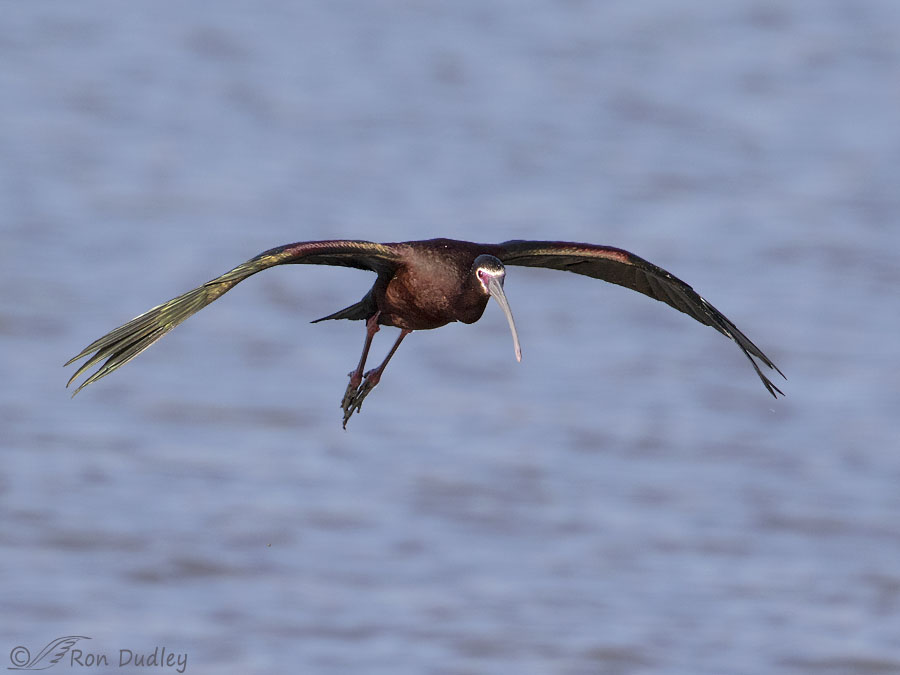
1/4000, f/6.3, ISO 400, Canon 7D Mark II, Canon EF 500mm f/4L IS II USM + EF 1.4 III Extender, not baited, set up or called in
Three days ago I spent some time with large numbers of American White Pelicans and White-faced Ibis as they were feeding in a shallow impoundment at Bear River MBR. I chose to mostly ignore the pelicans and concentrate on the ibises in flight as they came in to join others of their kind as they were feeding directly in front of me.
Getting head-on flight shots like this one was relatively easy but this flight angle doesn’t appeal to me much, especially with such a dark bird. My goal was to catch them banking and flaring just before landing in the water which allows us to see more of the bird’s surface area and often causes their iridescence to pop when the light hits them at just the right angle.
But banking and flaring also makes them change flight direction quickly so they’re very difficult to keep in the frame and keep focus locked on them. I tried many times and failed, with only a single success.
This bird was that success. While firing a burst I got several sharp shots of ‘him’ flying at this angle while hoping he’d cooperate with a more interesting flight maneuver.
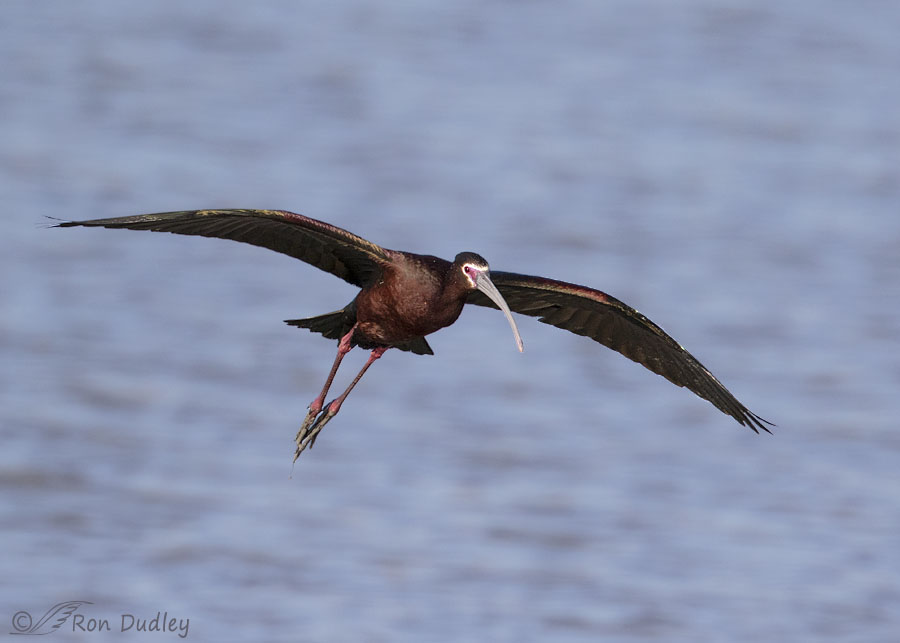
1/4000, f/6.3, ISO 400, Canon 7D Mark II, Canon EF 500mm f/4L IS II USM + EF 1.4 III Extender, not baited, set up or called in
Four frames later it’s finally beginning, just beginning, to happen.
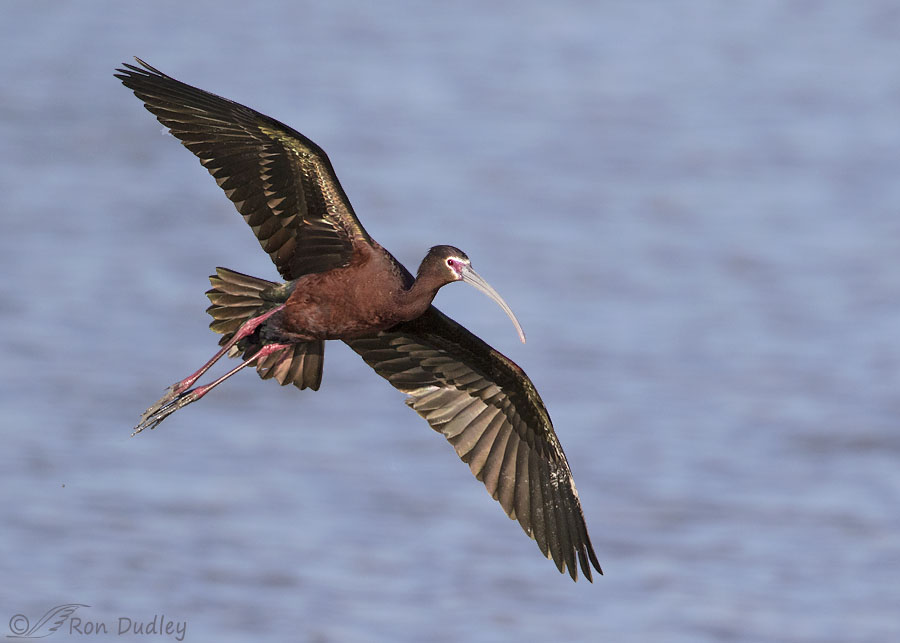
1/4000, f/6.3, ISO 400, Canon 7D Mark II, Canon EF 500mm f/4L IS II USM + EF 1.4 III Extender, not baited, set up or called in
And five frames after that his banking and flaring flight angle allowed a much better view of more of the bird. At this point of course he’s making a quick turn to our right so this is where I usually either lose focus on the bird or start clipping body parts. Or both.
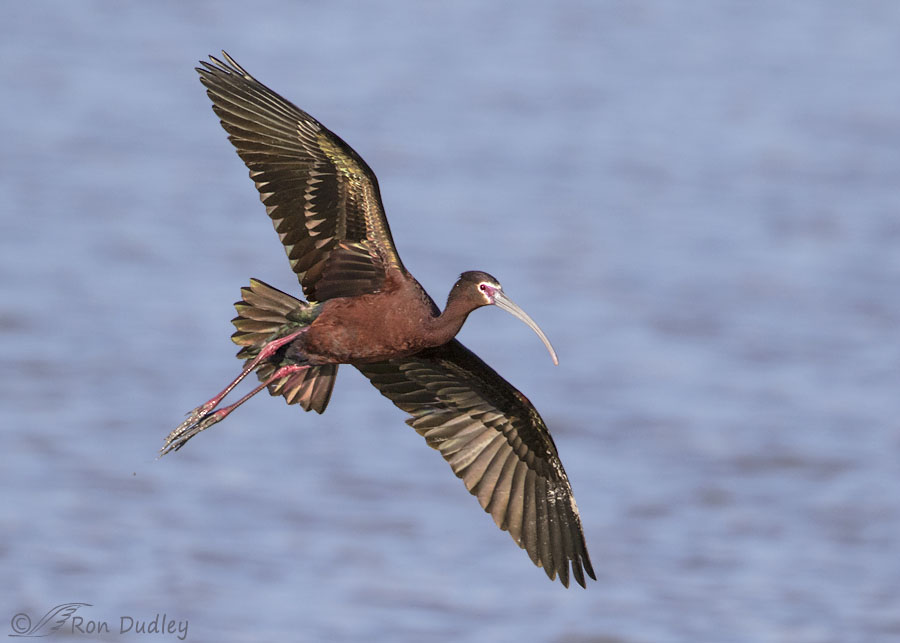
1/4000, f/6.3, ISO 400, Canon 7D Mark II, Canon EF 500mm f/4L IS II USM + EF 1.4 III Extender, not baited, set up or called in
But this time I managed to keep him both in frame and in focus so in this next shot we see him in all his glory as the light angle lit up his iridescence. This is the photo I posted two versions of a couple of days ago.
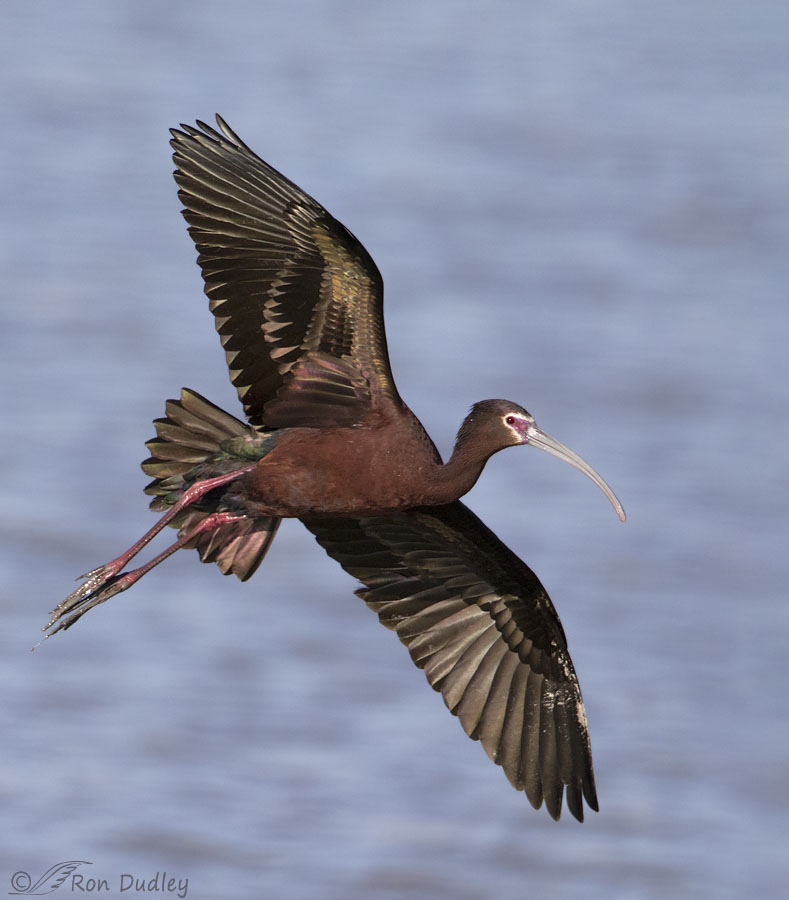
1/4000, f/6.3, ISO 400, Canon 7D Mark II, Canon EF 500mm f/4L IS II USM + EF 1.4 III Extender, not baited, set up or called in
The next shot in the burst is the one that caught him most broadside to me but by then he was beginning to lose some of his iridescence. He was so close to the right edge of the frame I felt I had to add canvas there for a better composition. After this shot I began to cut off body parts and after that I lost him in the frame completely. He was really scootin’.
I tried to get these kinds of shots from about a dozen different ibises as they flew in to land in the water in front of me and only succeeded this one time. It’s amazing how much better I feel about a single success out of many attempts than I would if I’d failed completely.
Degree of difficulty makes a big difference in my attitude toward my flight shot batting average. .
Ron


Sensational series Ron! Thanks for sharing!
Charlotte Norton
Stunning. That iridescence is gorgeous.
Oooh. And ahhh.
I am a tired puppy today but inarticulate waves of gratitude are flowing your way.
And I love your narrative. And the comments. Both add so much to each and every posts.
Thank you – and all who sail on the good ship Dudley.
“The good ship Dudley” – thank you, Shirley…
Very Nice! It is hard. I think I mentioned on the earlier post I sat for about 40 minutes at sunset trying to catch the iridescence. I too wanted a flight shot and a shot with the wings flared and the bird looking my way. Due to the wind direction I never got what I was trying for. I did get nice iridescence, but no flight shots, or nice head angle. Maybe you or another reader can explain why ibis hold their wings stretched straight up into the air while walking and probing for food along the ground. Is it a territory display, a form of sunbathing, perhaps breeding display? I mostly see it in the spring when they first arrive.
Thanks, April. I don’t think I’ve ever seen an explanation for the behavior you describe. But I do see it.
I have long admired your narratives which contribute so much to your postings. They add interest and help educate those of us who struggle to get memorable shots which you do day after day.
Much appreciated, Bob. Sometimes I think I rattle on too much about stuff like that. I probably do for some readers but for others I think, or at least hope. it’s interesting or I wouldn’t do it..
I love that you’ve had so many really successful shots of the White Faced Ibis
to post– I especially admired the last two– the angle of the bird and its
bronze iridescence are magnificent !
Thank you, Kris.
Challenge met even if it took many to nail it! Beautiful shots, Ron. Your skill and persistence really paid off…….definitely a beautiful bird even if not the prettiest face in the world…..
Your skill and persistence really paid off…….definitely a beautiful bird even if not the prettiest face in the world….. 
Thank you, Judy. Yeah, that face is kinda strange looking isn’t it. But then the same could be said about my own…
Ditto for Lyle’s post. The photos are always outstanding, but I think the narrative makes for a huge difference between just looking at beautiful photos and having a thorough understanding of why, where, how, etc.
We have lots of them here now and after observing them for many years I find that knowing when they are going to take off, or when they might land is very tricky. They can be grazing and then very suddenly take off, and getting the in-flight shots is not easy because often their flights are just to move 30 yards away.
Great job Ron.
Everett, what I said in my response to Lyle below also applies to your first paragraph above. Thank you.
I do enjoy your narrative of the process involved in achieving these photos. It allows for a deeper appreciation of your efforts and the subject of those efforts. Thank you.
Your comment is much appreciated this morning, Lyle.
While I was writing this post I kept thinking that some, maybe many, readers would think “who cares how he got the shots, just show them and don’t babble on about the process so much”.